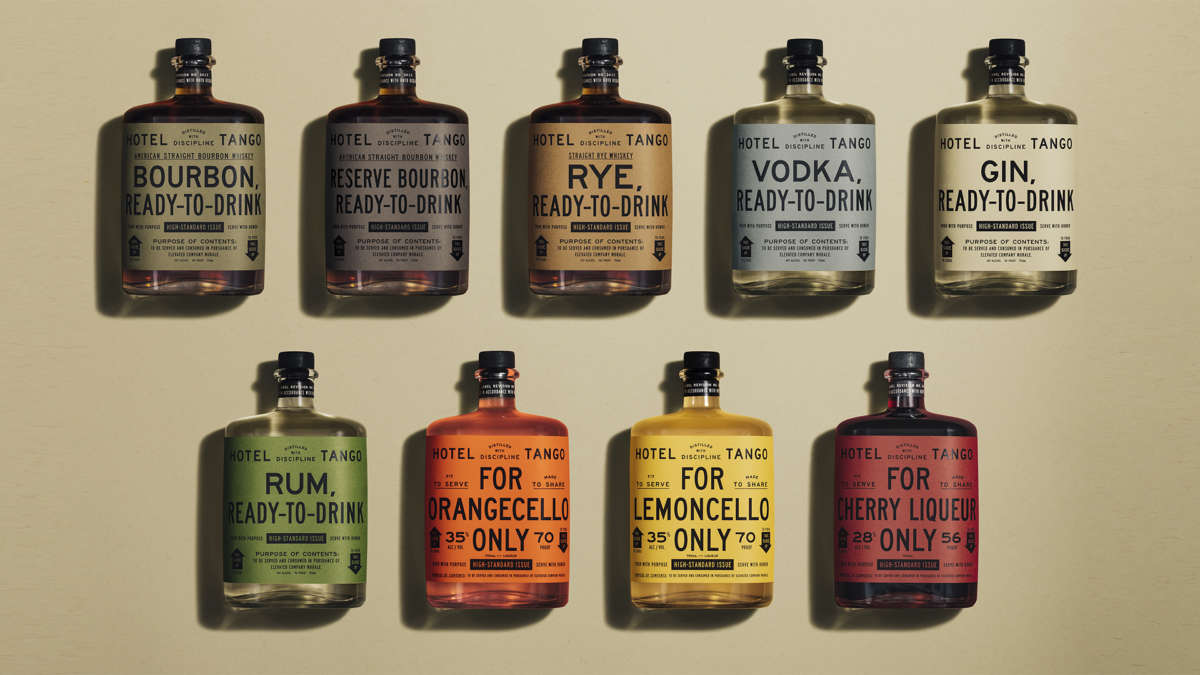
There's Enough Shelf Space to Go Around
A unique bottle design can earn your spirit some buzz and win the battle on the shelf.

The spirits category is in its heyday: for the tenth straight year, the industry is seeing positive growth. Retail sales alone totaled over $90 billion in 2019 (Beverage Industry). With this consistent growth, new brands are entering the market almost every day. The third quarter of 2020 saw a 58% increase year-over-year in registrations of new spirits brands and a 31% increase over the previous quarter according to Sovos.
The result of the spirits boom is added saturation in an already competitive marketplace, leading marketers to seek ways to distinguish their brand, hoping to displace competitors. But, through our work in the spirits category, we learned that the goal shouldn’t be to displace your competitors. The goal should simply be to get included in a consumer’s spirits rotation.
Our (pre-COVID) in-home interviews with spirits drinkers revealed people tend to “collect” a number of spirit brands within the same category and enjoy explaining why they purchased each bottle. If a brand had a story that connected with the consumer, and one they liked to tell, it found its way to their shelf.
When Travis Barnes founded Hotel Tango Distillery in 2014, it became the first combat-disabled, veteran-owned distillery in the U.S. While this might have appeared to be an interesting story, consumers generally viewed the brand as a novelty gift for other military members and veterans. The general consumer didn’t feel the relevance for themselves.
Armed with these findings, we reestablished Hotel Tango’s brand story, connecting military discipline to the meticulous way they craft their spirits -- a testament to Travis’ time in The Marines. “Distilled with Discipline” became the brand’s rallying cry -- a tagline that respected the brand’s military roots but unlocked a story all spirits drinkers could appreciate and share.

Name recognition is a driving force in the purchasing process for spirit drinkers, which can be very expensive to achieve. But smaller brands still have an opportunity to capture consumer attention if they take full advantage of the shelf -- at liquor stores, bars, restaurants or a friend’s bar at home. Because purchase consideration for smaller brands most likely happens at-shelf, the brand story must take a more physical form.
If you’re a challenger brand, your bottle must become your brand’s billboard. Don’t waste the chance to leverage valuable real estate to communicate your brand story to consumers. Every pointed decision is an opportunity for a shared connection -- between brand and consumer and between new and existing consumers. In this way, the bottle and the brand must become synonymous.
Prior to its rebrand, Hotel Tango’s original bottle told little about the brand story. The bottle included a litany of military-specific points that were tied to the product and distillery but lacked a clear voice and story. As part of our rebranding efforts, we were inspired by MRE’s, meals ready-to-eat, from the founder’s time in The Marines. Now, everything about the bottle from its shape, which looks and feels like a flask (made for sharing), to the messaging about the product (relentless attention to detail), evokes the brand’s story and mission to craft fine spirits that are fit to serve, and made to share.


To compete as a challenger in a very crowded category, our advice is to resist the notion to displace your competitors. Instead of focusing on how your brand is different from the competition, focus more on finding your brand’s story to connect with consumers. That connection will help your brand find its way off marketplace shelves and onto your consumers’ bar shelves.
